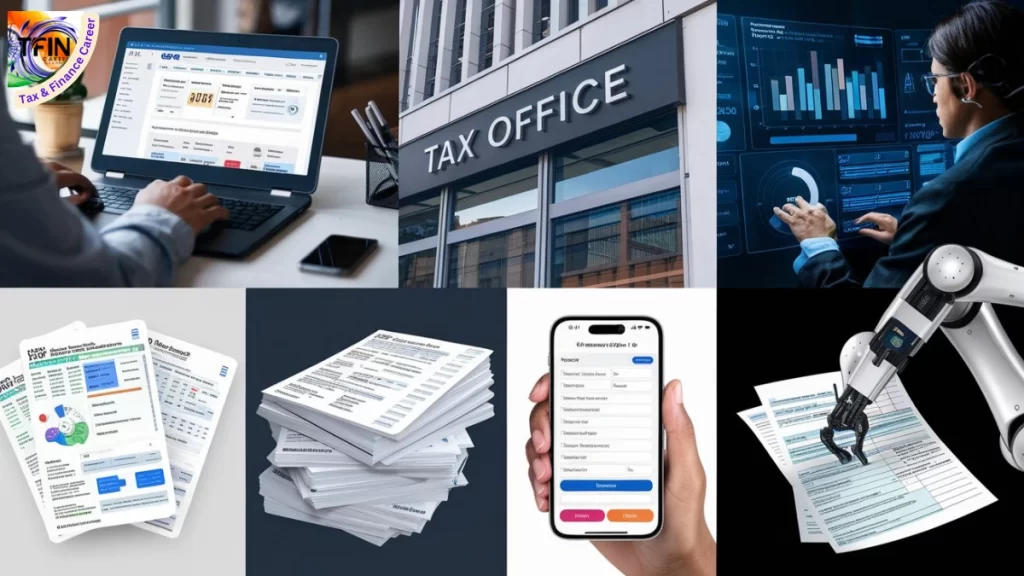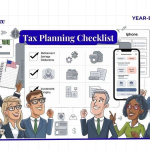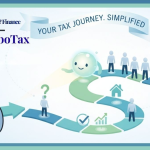Understanding Taxes: A Comprehensive Guide
Hello Learner, Before we provide Chapterwise study material, It is an Overview of the Study material and we hope you read this article thoroughly. Taxes are a fundamental part of any nation’s economic structure, but they can often seem complex and overwhelming. This expanded guide aims to demystify taxation, explaining various types of taxes, their purposes, and how they affect individuals and businesses.
Follow Course Module – Income Tax and ITR Filing: Ultimate Course Content 2024-2025
What is Tax?

Tax is a financial burden that is imposed by a government on a person
Tax is a financial burden. Why am I calling it a financial burden? Do you know why it is a financial burden?
Because no one willingly pays taxes out of their happiness I don’t enjoy it when I pay taxes I pay taxes because I am obligated to do so
Why Do We Pay Taxes?

Taxes are charges applied by the government to fund a wide range of public services and facilities. These include:
- National security and defense
- Infrastructure (roads, bridges, public transportation)
- Public utilities (water supply, waste management)
- Healthcare systems
- Education
- Social welfare programs
- Environmental protection
- Public administration
By collecting taxes, the government can provide these essential services to its citizens, ensuring the smooth functioning and development of the nation.
Know more and Update Your Basic Income Tax Knowledge: Ultimate Guide 2024
Types of Taxes
Taxes can be broadly categorized into two main types: direct taxes and indirect taxes.
Direct Taxes
Direct taxes are levied directly on individuals or organizations and cannot be transferred to others.
- Income Tax:
- Levied on an individual’s or company’s income
- For salaried individuals, it’s often deducted from their salary (known as TDS – Tax Deducted at Source)
- For businesses, it’s applied to profits, not revenue
- Tax slabs vary based on income levels
- Example: In India, as of 2024, there’s no tax on income up to ₹7 lakhs per annum
Income Tax Example (Real-Life Scenarios)
Meet Priya, a software engineer earning ₹10,00,000 per year.
- In India, let’s assume the tax slab for her income is 20%.
- Priya’s income tax would be: ₹10,00,000 * 20% = ₹2,00,000
- Her take-home salary after tax: ₹10,00,000 – ₹2,00,000 = ₹8,00,000
Note: This is a simplified example. In reality, some various deductions and exemptions could reduce Priya’s taxable income.
- Corporate Tax:
- Levied on the profits of companies
- Rates may vary based on the size and type of the company
- Example: A company making ₹1 crore in profit might pay 30% as corporate tax
Corporate Tax Example (Real-Life Scenarios)
Imagine “TechSolutions Pvt Ltd,” a small tech company with annual profits of ₹50,00,000.
- If the corporate tax rate is 25%, their tax would be: ₹50,00,000 * 25% = ₹12,50,00.
- The company’s after-tax profit: ₹50,00,000 – ₹12,50,000 = ₹37,50,000
- Property Tax:
- Applied to owned properties like houses or flats
- Often used to fund local services like sewage, sanitation, and garden maintenance
- Example: A homeowner might pay 1% of their property’s value as annual property tax
Property Tax Example (Real-Life Scenarios)
Rahul owns a flat valued at ₹50,00,000.
- If the annual property tax rate is 1%, Rahul would pay: ₹50,00,000 * 1% = ₹50,000 per year
- Capital Gains Tax:
- Levied on profits made from selling assets like property, shares, or mutual funds
- Rates may differ for short-term and long-term gains
- Example: If you buy shares for ₹100 and sell them for ₹1000 after 10 years, you’ll pay tax on the ₹900 profit
Capital Gains Tax Example (Real-Life Scenarios)
Meera bought shares worth ₹1,00,000 and sold them after 2 years for ₹1,50,000.
- Her capital gain: ₹1,50,000 – ₹1,00,000 = ₹50,000
- If the capital gains tax rate is 10%, she’d pay: ₹50,000 * 10% = ₹5,000 in tax
- Gift Tax:
- Applied to monetary gifts above a certain value
- Helps prevent tax evasion through gifting
- Example: Gifts exceeding ₹50,000 in a year might be taxable
Indirect Taxes
Indirect taxes are levied on goods and services and can be passed on to the end consumer.
- Goods and Services Tax (GST):
- Applied to most goods and services sold within a country
- Rates vary depending on the type of good or service
- Example: A 5% GST on a ₹100 product would make its final price ₹105
Goods and Services Tax (GST) Example (Real-Life Scenarios)
Amit buys a new smartphone priced at ₹20,000.
- If the GST rate on smartphones is 18%, the total price would be: ₹20,000 + (₹20,000 * 18%) = ₹20,000 + ₹3,600 = ₹23,600
- Customs Duty:
- Levied on goods imported from other countries
- Rates vary based on the type of goods and trade agreements
- Example: Importing a luxury car might incur a 100% customs duty, doubling its price
Customs Duty Example (Real-Life Scenarios)
Sarah ordered a laptop from the US, priced at ₹70,000.
- If the customs duty rate is 42%, she’d pay an additional: ₹70,000 * 42% = ₹29,400
- Total cost of the laptop: ₹70,000 + ₹29,400 = ₹99,400
- Road Tax:
- Paid when purchasing a vehicle for the right to use public roads
- Often a one-time payment at the time of vehicle purchase
- Example: A 10% road tax on a ₹5 lakh car would add ₹50,000 to its price
Road Tax Example (Real-Life Scenarios)
Vikram buys a new car priced at ₹5,00,000.
- If the one-time road tax is 8%, he’d pay: ₹5,00,000 * 8% = ₹40,000
- Total cost of the car: ₹5,00,000 + ₹40,000 = ₹5,40,000
- Toll Tax:
- Charged for using specific highways or bridges
- Used for maintenance and recovery of construction costs
- Example: Paying ₹100 to use a highway connecting two cities
Toll Tax Example (Real-Life Scenarios)
Neha drives from Mumbai to Pune on the expressway.
- The toll for a one-way trip is ₹230 for a car
- For a return trip, she’d pay: ₹230 * 2 = ₹460
- Entertainment Tax:
- Applied to movie tickets and other forms of entertainment
- Rates may vary by state or locality
- Example: A 10% entertainment tax on a ₹200 movie ticket would make it cost ₹220
Entertainment Tax Example (Real-Life Scenarios)
A movie ticket costs ₹200.
- If there’s a 10% entertainment tax, the final price would be: ₹200 + (₹200 * 10%) = ₹200 + ₹20 = ₹220
Require to Plan for Save taxes – Tax Planning: 7 Essential Smart Strategies For Maximize Your Wealth
Tax Exemptions and Benefits

- Agricultural Income: Generally tax-free to support the agricultural sector
- Non-profit Organizations and Trusts: Often enjoy tax exemptions to encourage social work
- GST Input Tax Credit: Businesses can claim GST refunds on goods and services used for business purposes
- Tax Deductions: Various deductions are available for investments, insurance premiums, and certain expenses, which can reduce taxable income
The Importance of Paying Taxes
While only a small percentage of the population might pay income tax directly, everyone contributes through indirect taxes. This system ensures that the government can function and provide necessary services to all citizens. In many countries, including India, only about 5% of the population pays direct income tax, making indirect taxes crucial for government revenue.
Tax Compliances and Evasion
- Tax Compliance: Following tax laws and regulations, including timely filing and payment of taxes
- Tax Evasion: Illegal practices to avoid paying taxes, which can result in penalties and legal consequences
- Tax Avoidance: Legal methods of reducing tax liability, often through deductions and exemptions
The Role of Technology in Taxation

Modern tax systems increasingly rely on technology for:
- Online tax filing and payments
- Data analysis to detect tax evasion
- Streamlining tax processes and reducing paperwork
International Taxation (Click and Know more about International Taxation)
In an increasingly globalized world, international taxation has become more complex:
- Double Taxation Agreements between countries
- Transfer Pricing regulations for multinational companies
- Digital Services Taxes for online businesses operating across borders
Conclusion

Understanding taxes is crucial for every citizen and business owner. While the system may seem complex, it’s designed to fund public services and distribute financial responsibility across the population. Whether through direct or indirect means, every individual contributes to the nation’s development through taxes. By being informed about different types of taxes and staying compliant with tax laws, we all play a part in supporting our country’s growth and well-being.
The above examples demonstrate how various taxes apply in everyday situations. Remember, tax rates and rules can vary based on location and can change over time, so always check the current regulations for accurate information.
Thank you for reading this post, don't forget to subscribe!






